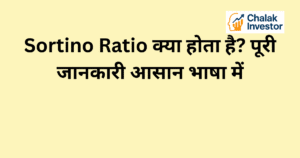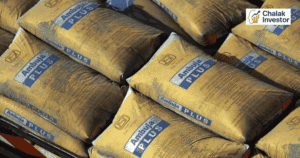निवेश और portfolio management में सिर्फ यह जानना पर्याप्त नहीं है कि किसी निवेश से कितना return मिला। यह समझना भी जरूरी है कि उस return के लिए कितना market risk उठाया गया। इसी को measure करने के लिए उपयोग किया जाता है Treynor Ratio। यदि आप जानना चाहते हैं कि Treynor Ratio क्या होता है, तो यह लेख आपके लिए है।
Treynor Ratio एक ऐसा financial metric है जो portfolio या investment के risk-adjusted return को मापता है। यह बताता है कि portfolio ने market risk (systematic risk) के मुकाबले कितना return generate किया।
परिभाषा Treynor Ratio की
Treynor Ratio यह measure करता है कि किसी investment का return उसके लिए उठाए गए systematic risk (Beta) के हिसाब से कितना अच्छा है।
Risk Adjusted Return का एक महत्वपूर्ण हिस्सा माना जाता है।
Higher Treynor Ratio का मतलब है कि निवेशक ने अपने market risk के मुकाबले बेहतर return पाया।
Formula Treynor Ratio का
Treynor Ratio को मापने का formula इस प्रकार है:
Treynor Ratio=Portfolio Return−Risk-Free RatePortfolio Beta\text{Treynor Ratio} = \frac{\text{Portfolio Return} – \text{Risk-Free Rate}}{\text{Portfolio Beta}}
जहाँ:
Portfolio Return = Investment या portfolio का expected return
Risk-Free Rate = बिना जोखिम के मिलने वाला return (जैसे government bonds)
Beta = Portfolio का market risk या systematic risk
Treynor Ratio का उद्देश्य (Purpose)
यह निवेशकों को यह समझने में मदद करता है कि portfolio ने market risk के मुकाबले कितना return generate किया।
Portfolio comparison में उपयोगी, खासकर अलग-अलग risk वाले portfolios के लिए।
Decision-making और investment efficiency evaluation में सहायक।
लाभ Treynor Ratio के
Portfolio की performance को market risk के context में measure करता है।
Risk-adjusted return समझने में मदद करता है।
Different portfolios के बीच तुलना आसान बनाता है।
Investment और portfolio optimization में उपयोगी।
Treynor Ratio की सीमाएँ (Limitations)
केवल systematic risk (Beta) को consider करता है, unsystematic risk को नहीं।
High beta वाले portfolios में misleading हो सकता है।
Historical data पर आधारित होता है; भविष्य के performance की guarantee नहीं देता।
केवल quantitative measure है; qualitative factors को capture नहीं करता।
Treynor Ratio कैसे बेहतर बनाया जा सकता है? (How to Improve)
Portfolio diversification अपनाएँ।
Risk management strategies का उपयोग करें।
Allocation और investment planning में संतुलन बनाए रखें।
Historical data और trends का सावधानीपूर्वक analysis करें।
Chalakinvestor की सलाह
Treynor Ratio को हमेशा nominal return और market context के साथ देखें।
High beta portfolios में careful interpretation करें।
Risk और return दोनों का संतुलन समझकर informed investment decisions लें।
Risk management और diversification के साथ Treynor Ratio का सही उपयोग करें।
FAQs (अक्सर पूछे जाने वाले प्रश्न)
Q1. Treynor Ratio क्यों जरूरी है?
यह portfolio के market risk के मुकाबले performance measure करने में मदद करता है।
Q2. Treynor Ratio और Sharpe Ratio में क्या अंतर है?
Sharpe Ratio total risk (standard deviation) consider करता है, जबकि Treynor Ratio केवल systematic risk (Beta) पर focus करता है।
Q3. Treynor Ratio का उच्च मूल्य क्या दर्शाता है?
High Treynor Ratio मतलब portfolio ने अपने market risk के मुकाबले बेहतर return दिया।
Q4. Treynor Ratio को कैसे बेहतर बनाया जा सकता है?
Portfolio diversification और risk-adjusted allocation strategies अपनाकर।
निष्कर्ष (Conclusion)
Treynor Ratio क्या होता है यह समझना निवेशकों के लिए जरूरी है। यह market risk के मुकाबले portfolio की efficiency और performance को measure करने का एक आसान तरीका है। High Treynor Ratio वाले investments बेहतर risk-adjusted returns दिखाते हैं और informed decisions लेने में मदद करते हैं।




















